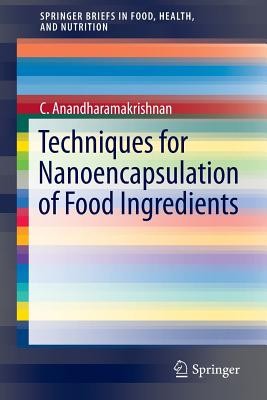
- We will send in 10–14 business days.
- Author: C Anandharamakrishnan
- Publisher: Springer
- Year: 2013
- Pages: 89
- ISBN-10: 1461493862
- ISBN-13: 9781461493860
- Format: 15.6 x 23.4 x 0.5 cm, minkšti viršeliai
- Language: English
- SAVE -10% with code: EXTRA
Techniques for Nanoencapsulation of Food Ingredients (e-book) (used book) | bookbook.eu
Reviews
Description
Nanoencapsulation has the potential to improve human health through its capacity to both protect bioactive compounds and release them at a specific time and location into various substances, including food. Numerous nanoencapsulation technologies have emerged in recent years, each with its own advantages and disadvantages. The goal of this Brief is to discuss the various nanoencapsulation technologies, such as emulsification, coacervation, inclusion encapsulation, anti-solvent precipitation, nanoprecipitation, freeze drying, and spray drying, including their limitations. Recent safety and regulatory issues concerning the various nanoencapsulation technologies will also be covered.
EXTRA 10 % discount with code: EXTRA
The promotion ends in 22d.02:55:28
The discount code is valid when purchasing from 10 €. Discounts do not stack.
- Author: C Anandharamakrishnan
- Publisher: Springer
- Year: 2013
- Pages: 89
- ISBN-10: 1461493862
- ISBN-13: 9781461493860
- Format: 15.6 x 23.4 x 0.5 cm, minkšti viršeliai
- Language: English English
Nanoencapsulation has the potential to improve human health through its capacity to both protect bioactive compounds and release them at a specific time and location into various substances, including food. Numerous nanoencapsulation technologies have emerged in recent years, each with its own advantages and disadvantages. The goal of this Brief is to discuss the various nanoencapsulation technologies, such as emulsification, coacervation, inclusion encapsulation, anti-solvent precipitation, nanoprecipitation, freeze drying, and spray drying, including their limitations. Recent safety and regulatory issues concerning the various nanoencapsulation technologies will also be covered.


Reviews